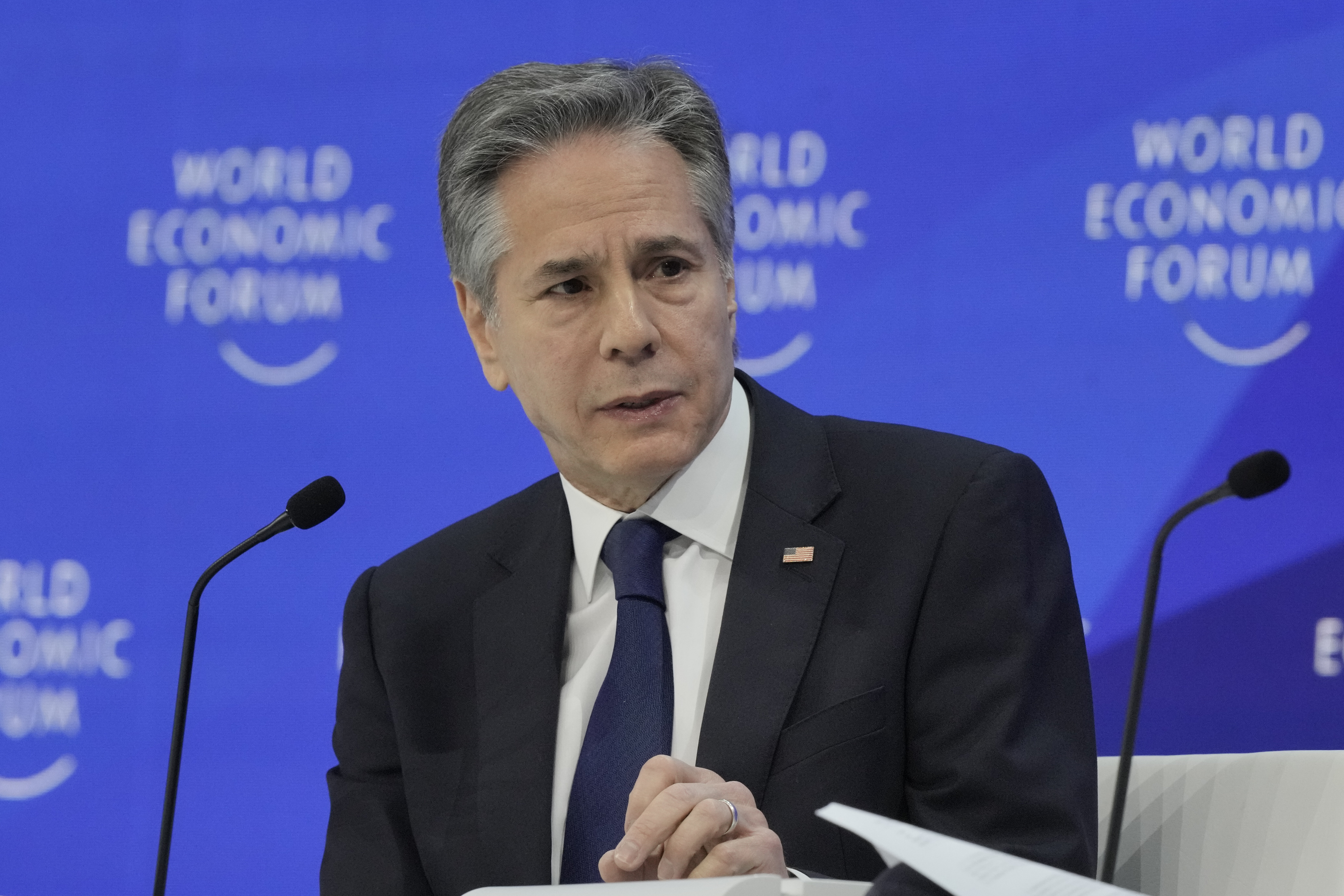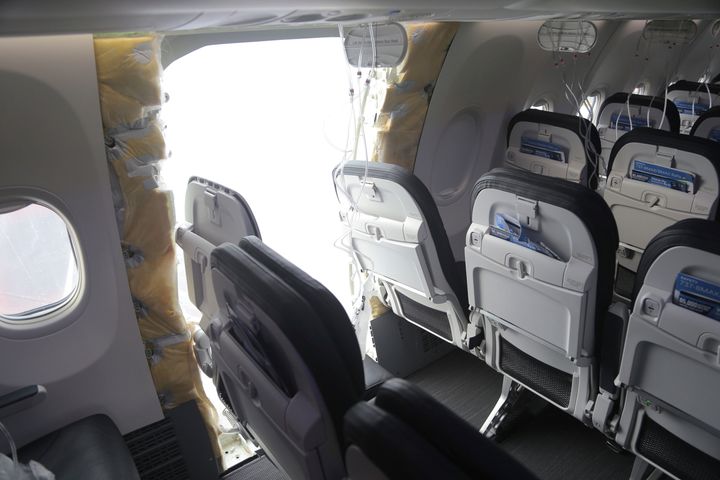Secretary of State Antony Blinken was reportedly forced to change planes while attempting to fly back to the U.S. from Switzerland on Wednesday after his modified Boeing 737 jet suffered an oxygen leak.
Blinken was preparing to depart Zurich after attending the World Economic Forum in Davos when the malfunction was discovered on his C-40 military plane, according to multiple news outlets, citing press pool reports.
The incident resulted in an hours-long delay, though it did not cause any disruptions to Blinken’s meetings in Washington, a State Department spokesperson told NBC News.

A smaller jet was ultimately flown in from Brussels to complete Blinken’s return, Bloomberg reported. A spokesperson for Boeing referred HuffPost’s questions to the U.S. Air Force. A spokesperson there was not immediately able to offer comment.
It’s the latest high-profile failure of a Boeing aircraft in the last two weeks.
On Jan. 5, a door plug blew out on a Boeing 737 Max 9 commercial plane while it was flying passengers over Oregon, leaving a gaping hole in part of the fuselage. After that mid-air scare, United Airlines said that it found loose bolts and other “installation issues” in some of its Boeing 737 Max 9 planes.
The Federal Aviation Administration responded by grounding all Boeing 737 9 Max planes that have door plugs until they can be fully inspected.

Boeing advised airlines in late December to inspect its 737 Max jets for a potential loose bolt in the rudder control system, after one plane was found with a missing nut during routine maintenance and another had a nut that was not properly tightened.
Over the weekend, a different model plane, a Boeing 737-800 used by All Nippon Airways, was forced to return to its departure airport in Japan after the cockpit window was found cracked. The airline called it an isolated incident.
Boeing’s 737 Max jets have faced troubles before. The Max 8 models were grounded for 20 months after two crashes in 2018 and 2019 that killed 346 people in total. Faulty sensor readings within the aircraft’s automated flight-control system, which is meant to counteract the plane’s tendency to tilt up, caused both planes to nosedive. The pilots were overridden by the software and unable to regain control.
Boeing on Monday announced that it will incorporate additional inspections into the 737 planes’ build process to ensure safety. These inspections will include independent reviews by outsiders.
Disclaimer: The copyright of this article belongs to the original author. Reposting this article is solely for the purpose of information dissemination and does not constitute any investment advice. If there is any infringement, please contact us immediately. We will make corrections or deletions as necessary. Thank you.
